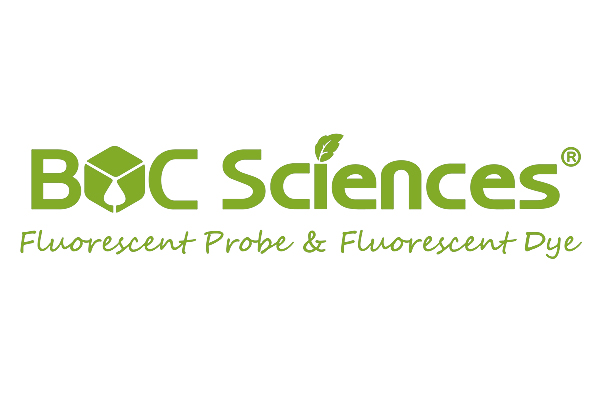
Monodansylcadaverine | CAS 10121-91-2
| Catalog Number | A16-0028 |
| Category | Lipid Fluorescent Probes |
| Molecular Formula | C17H25N3O2S |
| Molecular Weight | 335.5 |
* Please be kindly noted products are not for therapeutic use. We do not sell to patients.
Product Introduction
Monodansylcadaverine is a fluorescent amine used to label autophagic vacuoles. It emits green-blue fluorescence and serves as an autophagy tracer.
Chemical Information
Product Specification
Application
| Synonyms | Dansylcadaverine; MDC; N-(5-aminopentyl)-5-(dimethylamino)-1-naphthalenesulfonamid |
| Purity | ≥95% |
| Canonical SMILES | CN(C)C1=CC=CC2=C1C=CC=C2S(=O)(=O)NCCCCCN |
| InChI | InChI=1S/C17H25N3O2S/c1-20(2)16-10-6-9-15-14(16)8-7-11-17(15)23(21,22)19-13-5-3-4-12-18/h6-11,19H,3-5,12-13,18H2,1-2H3 |
| InChIKey | MLEBFEHOJICQQS-UHFFFAOYSA-N |
| Appearance | Solid Powder |
| Storage | Store at -20°C |
Monodansylcadaverine (MDC) is a fluorescent compound commonly used in biological research to study cellular processes. Structurally, it is known as 5-[N-(5-aminopentyl)amino]-2-(dimethylamino)sulfonylbenzoic acid, which combines the fluorophore dansyl with the compound cadaverine. This allows MDC to be highly fluorescing, enabling researchers to visualize it in cells under a fluorescence microscope. The compound’s ability to permeate cellular membranes and bind to specific intracellular structures makes it particularly useful in studying autophagic activity and protein cross-linking. It fluoresces with a peak emission at around 515 nm when excited with UV light, which can be captured for imaging purposes.
MDC is widely used in research focused on autophagy, a crucial process for maintaining cellular homeostasis through the degradation and recycling of cellular components. Because MDC can label autophagic vacuoles, researchers can visualize and measure autophagic activity in cells. The accumulation of MDC in vacuoles serves as an indicator of autophagic flux, thereby providing insights into the regulation of cellular metabolism and the response to various stressors or pharmaceutical agents. This utility makes it an invaluable tool in studying diseases like cancer and neurodegenerative disorders where autophagy plays a significant role.
Another key application of Monodansylcadaverine is in the study of protein cross-linking and membrane dynamics. MDC has the ability to insert itself into membranes and to covalently bind with transglutaminase substrates, allowing it to act as a cross-linking agent. This property is valuable in the study of cellular architectures and the stability of cellular membranes under different physiological conditions. Researchers employ MDC to investigate the structural integrity of cell membranes, which is essential for understanding cell function, signaling, and the impact of external compounds on membrane stability.
Monodansylcadaverine also finds application in studying apoptosis, the programmed cell death mechanism essential for organismal development and homeostasis. In apoptotic studies, MDC is used to stain apoptotic bodies that form during the process. The fluorescence of MDC helps in the tracking and quantification of apoptosis, providing researchers with a means to assess the efficacy of anti-cancer drugs and treatments that aim to modulate cell death pathways. This application is particularly relevant in pharmaceutical research, where apoptosis is a target for therapeutic intervention.
Finally, MDC’s role in diagnostics and experimental therapeutics is an emerging application area. Its fluorescent properties can be harnessed for developing assays that detect aberrant cellular processes in disease states. In personalized medicine, MDC-based assays may enhance the detection and analysis of specific markers related to autophagy and apoptosis in patient-derived samples, guiding therapeutic decisions. As biotechnology advances, MDC will likely continue to provide insights into cellular processes and assist in the development of diagnostic tools aimed at improving patient outcomes through more tailored treatment strategies.
Recommended Services
Recommended Articles

- Hoechst Dyes: Definition, Structure, Mechanism and Applications
- Mastering the Spectrum: A Comprehensive Guide to Cy3 and Cy5 Dyes
- Fluorescent Probes: Definition, Structure, Types and Application
- Fluorescent Dyes: Definition, Mechanism, Types and Application
- Coumarin Dyes: Definition, Structure, Benefits, Synthesis and Uses
- Unlocking the Power of Fluorescence Imaging: A Comprehensive Guide
- Cell Imaging: Definitions, Systems, Protocols, Dyes, and Applications
- Lipid Staining: Definition, Principles, Methods, Dyes, and Uses
- Flow Cytometry: Definition, Principles, Protocols, Dyes, and Uses
- Nucleic Acid Staining: Definition, Principles, Dyes, Procedures, and Uses
Recommended Products
Online Inquiry










